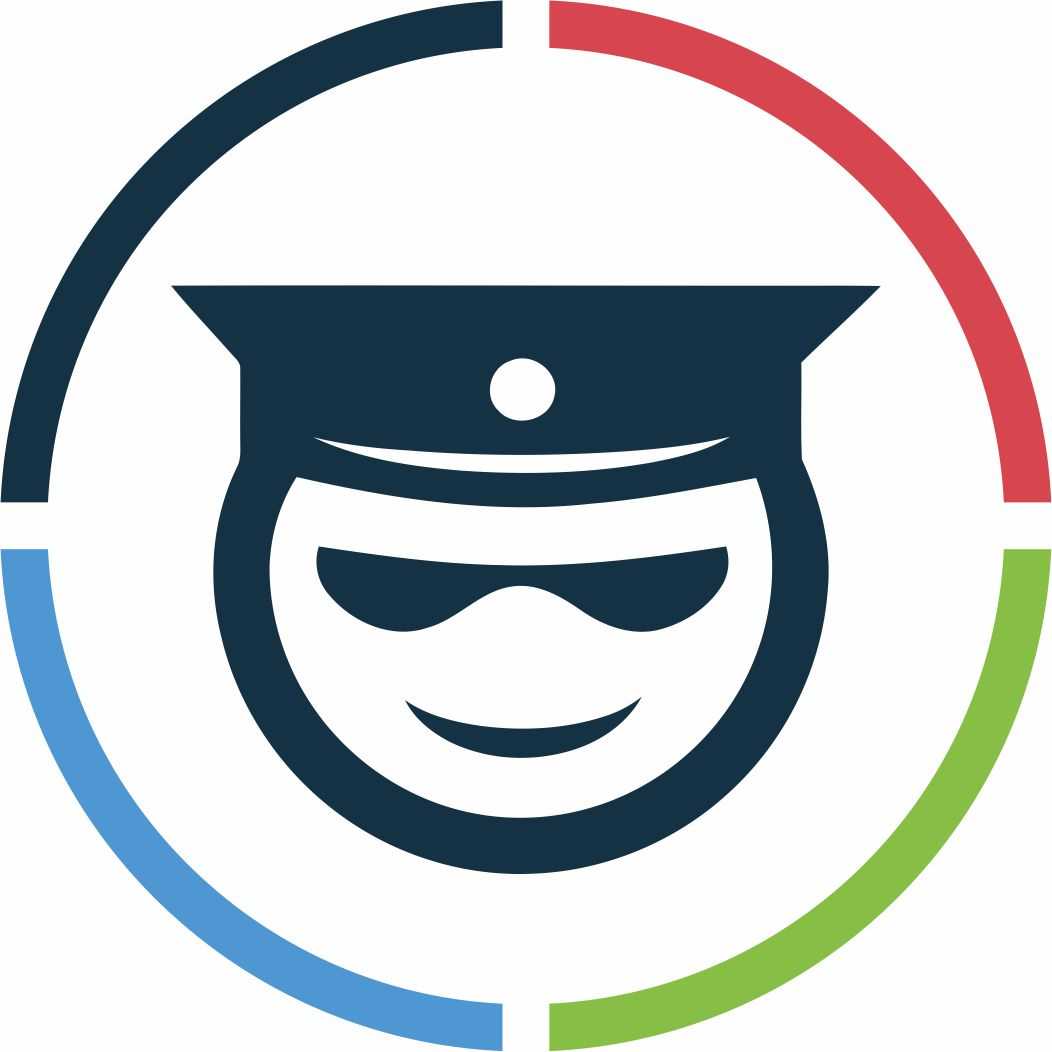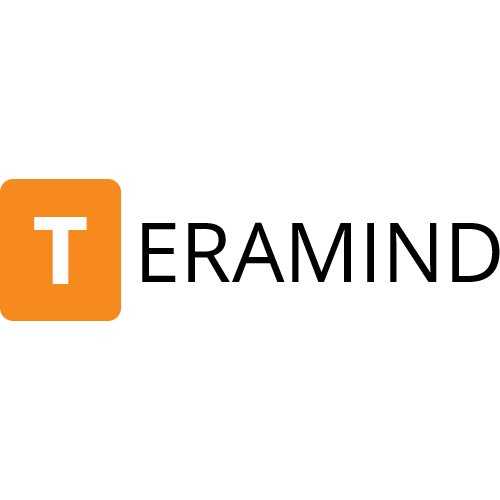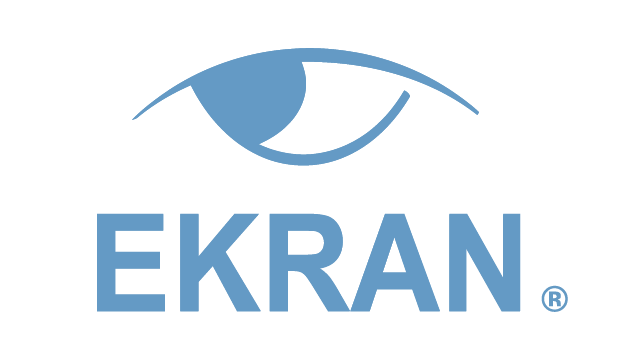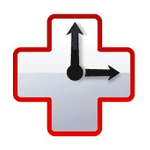What Is Employee Tracking System?
A strong tool for managing and keeping an eye on employees is the employee tracking system. It gives businesses real-time information about worker performance, attendance, and productivity, enabling them to streamline operations and boost profits. Fundamentally, an employee tracking system gathers and analyzes data on employee behaviors using cutting-edge technologies like GPS, biometrics, and cloud-based software.
Time and attendance, project hours, breaks, and even location monitoring for remote workers are examples of this data. Employers can use this data to better understand how their staff members are using their time and spot any areas that might require improvement. The capacity of an employee monitoring system to simplify administrative duties, such as keeping track of work hours and processing payroll, is one of its main advantages.
The system automates these procedures rather than depending on manual processes, which are frequently laborious and prone to errors. This allows HR and management staff to devote more of their valuable time to more important duties. An employee tracking system can also reveal information about the performance and engagement of employees.
Businesses may identify high-performing workers and reward and incentivize their behavior by monitoring productivity measures. Employers, on the other hand, can also spot potential problem areas in their staff members and offer more assistance or training to help them perform better.
An employee tracking system is a crucial tool for businesses with mobile or remote workers as it promotes efficiency and accountability. It gives all parties involved a sense of openness and trust by enabling employers to monitor the location, schedule, and actions of remote workers.
What Are The Recent Trends In Employee Tracking System?
Employers can now efficiently monitor and manage their personnel thanks to employee tracking technologies, which have become an essential component of the modern workplace. These systems have changed significantly in recent years due to technological breakthroughs, adding new features and functionality to satisfy the shifting demands of enterprises. Let's examine the latest developments in employee tracking systems that you should take into account before making a purchase.
1. Cloud-Based Solutions: The move to cloud-based solutions is one of the largest trends in personnel tracking systems. Cloud-based solutions are more affordable, scalable, and accessible than conventional on-premise systems. Additionally, they provide simple integration and remote access, enabling companies to monitor their staff from anywhere.
2. Mobile Integration: It should come as no surprise that mobile integration is a major trend in employee monitoring systems given the increase in remote work and the widespread use of cellphones. Employees may track their assignments, log their hours, and get notifications while on the road with the use of mobile apps offered by many contemporary systems.
3. Real-Time Monitoring: Another important trend that is becoming more popular in the market for employee monitoring systems is real-time tracking. Employers can use this function to monitor their workers' whereabouts and work activities in real time, which facilitates more effective task management.
4. Data Analytics: In recent years, personnel tracking systems have also used data analytics more frequently. Businesses may now find areas for development and make well-informed decisions by using these tools to gather and analyze data on employee performance, attendance, and productivity.
5. Biometric Authentication: In personnel monitoring systems, biometric authentication—such as fingerprint or facial recognition—is growing in popularity. By using this technology, buddy punching can be avoided and employee attendance can be recorded more securely and accurately.
6. Integration With Other HR Systems: Another trend in employee monitoring systems that has grown in popularity is integration with other HR systems, such as payroll or performance management. This integration offers a more comprehensive picture of employee data, minimizes manual labor, and streamlines procedures.
Benefits Of Using Employee Tracking System
For companies of all sizes to efficiently manage and monitor their personnel, employee monitoring solutions are quickly becoming a necessary tool. These systems are intended to simplify a number of HR procedures, including as payroll administration, performance reviews, time and attendance monitoring, and much more. We will examine the advantages of implementing an employee monitoring system for your company in this buyer's guide.
1. Increased Productivity And Efficiency: One of the main advantages of implementing an employee monitoring system is the notable increase in organizational productivity and efficiency. The solution reduces the time and effort needed for manual tracking by storing employee data in a central database that makes it easy to obtain critical information. This results in a more efficient workflow, which raises production levels in the end.
2. Precise Time And Attendance Tracking: Punch cards and traditional timesheets are no longer necessary thanks to employee tracking systems, which provide precise time and attendance tracking. Businesses may make sure that workers are accurately recording their work hours and preventing errors or possible time fraud by implementing technologies like GPS tracking or biometrics.
3. Improved Labor Law Compliance: Businesses must adhere to labor laws and regulations in the current regulatory environment. By automating compliance procedures, such as making sure that overtime is calculated correctly and that statutory rest periods are taken, employee tracking systems can assist in this area and lower the risk of non-compliance fines.
4. Real-Time Performance Evaluation: Another important advantage of employee monitoring systems is the ability to monitor workers' performance in real-time. Managers can spot performance problems and act quickly to address them when they have access to real-time data. Employees and the company both benefit from ongoing improvement as a result of this more efficient performance review procedure.
5. Improved Payroll Management: Handling payroll by hand can be laborious and error-prone. Payroll administration capabilities provided by employee tracking systems aid in automating the procedure. This covers keeping track of hours worked, figuring out pay, and distributing checks. As a result, companies can guarantee that their workers receive accurate and timely payments, which will boost employee retention and satisfaction.
6. Remote Work Capabilities: Employee tracking solutions have become even more crucial for firms as remote work has grown in popularity. By enabling remote time tracking and monitoring of off-site workers, these technologies let managers keep tabs on their progress and make sure they are keeping on task.
Important Factors To Consider While Purchasing Employee Tracking System?
To make sure you select the finest choice for your company, there are a number of important considerations to take into account before investing in an employee monitoring system. The following are important factors to consider before making your purchase:
1. Features And Functionality: The employee tracking system's features and functionality should be the first and most crucial consideration. Essential features including task management, attendance tracking, time tracking, and reporting should be included. Additionally, search for services like geolocation or remote work tracking that are tailored to your company's requirements.
2. Compatibility And Integration: Verify that an employee monitoring system is compatible with your current software and systems before making a purchase. Additionally, it should be able to interact with other apps and technologies that your team utilizes, which will facilitate tracking and data sharing.
3. User-friendliness: Any new tool's effective adoption depends on its user-friendly interface. Your team should need little training to get started with your employee tracking system because it should be simple to use and navigate. To evaluate the system's usability and determine whether it fulfills your needs, think about obtaining a demo or a free trial.
4. Security And Privacy: It is crucial to take into account the security and privacy measures in place because employee tracking entails gathering and keeping sensitive data. Seek out a system that provides secure server hosting, data encryption, and adherence to regulations like the GDPR.
5. Scalability And Customization: An effective personnel monitoring system should be able to grow and adapt to the evolving needs of your company. As your business expands, you should be able to add or delete users, features, and integrations.
6. Customer Service: When purchasing any software, having dependable customer service is essential. Choose a system that has a dedicated support staff available around-the-clock to assist you with any problems or questions.
7. Cost And Budget: Finally, take into account the personnel tracking system's cost and budget. Although a low price could sound alluring, make sure you aren't sacrificing any necessary features. Conversely, a costly system could have capabilities you don't require. To make an informed choice, look for a balance between price and functionality. You can make sure that you select the best employee monitoring system for your company and maximize the output and efficiency of your staff by keeping these considerations in mind when making your purchase.
What Are The Key Features To Look For In Employee Tracking System?
Finding essential characteristics that will satisfy the unique requirements and objectives of your company is crucial when thinking about an employee tracking system. These are the most important qualities to search for:
1. Real-Time Tracking: You should be able to view the location, activity, and status of employees at any given time by using the system's real-time tracking feature. This is particularly crucial for companies that use field or remote personnel.
2. Geofencing: With this function, you may create virtual limits for staff members and get notifications when they enter or exit specified locations. It is helpful for tracking employee movements and making sure they are in the correct location.
3. Tracking Time And Attendance: An effective employee tracking system should be able to keep track of workers' hours worked, breaks taken, and requests for time off. Payroll and employee scheduling management may become more accurate and efficient as a result.
4. Project And Task Management: Seek out a system that lets you assign projects and tasks to staff members and monitor their progress. Teamwork and productivity can both be enhanced by this feature.
5. information And Analytics: The system ought to offer thorough information and analytics on worker productivity, attendance, and performance. You can use this information to make wise judgments and pinpoint areas that need work.
6. Mobile Compatibility: Having a system that works on mobile devices is crucial in the current digital era. This enables workers to view their assignments and calendars while on the go, clock in or out, and request time off.
7. Integration Capabilities: Seek out an Employee Tracking System that can be integrated with other project management or HR software if you currently use it. This can minimize manual data entry and streamline procedures.
8. Customization Options: Since every company has different needs, it's critical to find a system that can be tailored to meet your needs.
9. Features Pertaining To Employee Privacy And Security: A quality employee tracking system should include safeguards for employee privacy and data protection.
10. User-Friendly Interface And Customer Support: Finally, pick a system that provides dependable customer service and has an easy-to-use interface. Your team may find it easier to implement and maintain the system as a result.
Why Do Businesses Need Employee Tracking System?
Although there are many reasons why businesses want personnel tracking systems, the primary advantages are enhanced accountability, simpler processes, and higher production. These systems measure work hours, regulate attendance, and keep an eye on employee behavior using technologies like GPS, biometric scanning, and time tracking software. Monitoring productivity is one of the main benefits of staff tracking systems.
Employers can find places where workers might be squandering time or where procedures could be improved by using real-time data on employee actions. Increased productivity and, eventually, greater revenues may result from this. Additionally, by automating processes like attendance monitoring and record-keeping, these systems assist companies in streamlining their operations.
By doing away with manual procedures, this saves time and lowers the possibility of human error. Additionally, this allows HR staff to concentrate on other crucial duties. Additionally, employment tracking systems give companies and employees a measure of accountability. Employers may make sure that workers are compensated for the hours they have put in by using precise time tracking and attendance data.
In the long term, this saves firms money by preventing time theft and buddy punching. Employee tracking systems can also help with legal and compliance issues. Businesses can protect themselves in wage and hour law disputes or litigation by keeping thorough records of employee work hours and activities.
All things considered, a company can gain a lot from investing in an employee tracking system by boosting responsibility, streamlining processes, enhancing productivity, and assisting with compliance. Businesses can successfully manage their workforce and maximize their operations with the correct framework in place.
How Much Time Is Required To Implement Employee Tracking System?
The length of time needed to implement an employee monitoring system can vary based on a number of factors, including the system's complexity, the organization's size, and the degree of customization needed. However, the average time to fully establish an employee tracking system can range from a few weeks to a few months. Assessing the organization's needs and objectives is the first stage in putting in place an employee tracking system.
To identify the essential features and functionalities needed in the monitoring system, this may entail collecting information on employee work habits, attendance, and productivity. The company must then decide which employee tracking system best suits its requirements and financial constraints. Because it entails investigating and assessing various possibilities, demonstrating the software, and haggling over prices with vendors, this may be a time-consuming procedure.
Setting up the system, configuring it to meet the needs of the company, and integrating it with any pre-existing software or systems are the first steps in the implementation process after the system has been chosen. This procedure can take a long time, particularly for larger companies with intricate workflows. The system must be tested following initial setup and configuration to make sure it is operating correctly and fulfilling the demands of the company.
Testing for user acceptability and making any required modifications may be part of this. The system is finally prepared for deployment once it has been thoroughly setup and tested. This entails educating staff members on the system's operation and making sure the switch from the old tracking method to the new one goes well.
Implementing an employee monitoring system might take a variety of amounts of time, but it is essential to allocate sufficient time and resources to guarantee a smooth and effective outcome. When planning and budgeting for an employee monitoring system, it is crucial to take into account the possibility that regular updates and maintenance may be necessary to keep the system functioning properly.
What Is The Level Of Customization Available In Employee Tracking System?
Different degrees of customisation are available in employee tracking systems to meet various corporate goals and specifications. Although the software supplier determines the degree of customisation offered, the following general factors should be taken into account when assessing the degree of customization in an employee tracking system:
1. Data Fields: To track certain information pertinent to their operations, many employee tracking systems enable firms to add custom data fields. This comprises client information, project information, and employee details. Each system has a different limit on how many custom data fields are permitted.
2. Reports: To effectively manage and evaluate personnel data, customizable reports are necessary. Seek out a system that gives you the flexibility to select which data to include in reports and to alter the report formats, like charts or graphs.
3. Workflows: In an employee monitoring system, workflows are the procedures used to monitor tasks including task completion, attendance, and time tracking. The ability to create and modify workflows to fit your business operations should be a feature of a good solution.
4. Permissions: Access to certain data in the Employee Tracking System may be necessary for certain jobs within a company. Businesses can regulate who can view or update specific data in the system thanks to the degree of customisation in permissions.
5. Integrations: An Employee Tracking System must easily interface with the various software programs that many firms utilize to run their operations. To simplify your procedures and integrate with your current software, look for a solution that supports custom connections.
6. Interface: An employee tracking system's interface can frequently be altered to suit the preferences of various users. Certain systems offer a customized experience by letting users select the language, color palette, and layout that they like best. In general, an employee tracking system's effectiveness for your company can be significantly impacted by the degree of flexibility it offers. To find the greatest fit, you must evaluate your unique needs and contrast them with the customization choices provided by various systems.
Which Industries Can Benefit The Most From Employee Tracking System?
An effective tool for businesses and organizations to manage and monitor employee performance and productivity is the employee tracking system. It assists with data-driven decision-making to maximize workforce management and provides insightful information about staff actions. Some sectors stand out as the top ones that stand to gain the most from putting in place an employee tracking system, even if there are many that can profit from this technology. Now let's examine them.
1. Construction Business: One of the most dynamic and fast-paced sectors, the construction business depends heavily on efficiency and timing. Construction organizations can monitor how much time their employees spend on various jobs and projects by using an employee tracking system. Accurate billing and payroll administration, project progress tracking, resource allocation, and pinpointing areas for improvement all depend on this.
2. Healthcare Sector: The healthcare sector is heavily regulated and necessitates rigorous adherence to legal requirements. Healthcare companies can use employee tracking systems to make sure that their staff members are following the necessary guidelines. Additionally, it aids in keeping track of healthcare workers' working hours, which is crucial for overseeing patient care and preserving workers' work-life balance.
3. Transportation And Logistics Sector: The transportation and logistics sector is centered on cost effectiveness and on-time delivery. Businesses can monitor the whereabouts of their fleet, the actions and conduct of its drivers, and the timetables for vehicle maintenance by utilizing an employee tracking system. This lowers operating expenses by allowing them to make adjustments in real time and optimize their delivery routes for maximum efficiency.
4. Sales And Marketing Industry: Having a thorough grasp of your team's performance and productivity is essential in the fast-paced world of sales and marketing. Sales managers can get real-time information on the activity of their sales staff, including calls, meetings, and leads converted, by using an employee tracking system. This aids in their decision-making to increase sales, the identification of high performers, and the coaching of underperformers.
5. Retail Industry: Based on consumer demand and foot traffic, employee tracking systems can assist optimize staff schedules in the retail sector, where providing excellent customer service is essential. It can also monitor the inventory management duties carried out by staff members, guaranteeing precise stock levels and avoiding loss from mistakes or theft. These are only a few of the sectors that stand to gain a great deal from the use of an employee tracking system. For companies of all sizes, this technology offers numerous benefits, ranging from increased production and efficiency to better decision-making and compliance. Make careful to select an Employee Tracking System that best suits your company's requirements and industry while making this decision.
Conclusion
In conclusion, the productivity, efficiency, and compliance of your company can all be significantly increased by investing in an employee tracking system. These technologies can significantly cut down on administrative duties and free up time for more strategic and meaningful work by automating and simplifying a variety of HR and staff management procedures. Assessing your unique needs and financial constraints is crucial when thinking about possible possibilities for your company.
Seek out a system with an easy-to-use interface and features that can be altered to meet your specific needs. To guarantee that your sensitive employee data is protected, it is also essential to carefully investigate the provider's security protocols and reliability. Remember that your HR team's and your employees' support and appropriate implementation are equally critical to the success of an employee tracking system.
In order to fully utilize this technology, communication and training are essential. All things considered, spending money on an employee tracking system shows that you care about your staff and the expansion of your company. You may enhance your workforce's overall management and productivity by selecting the best solution and putting it into practice effectively. We hope that this buyer's guide has given you useful information to assist you make an informed choice for the requirements of your company.






















